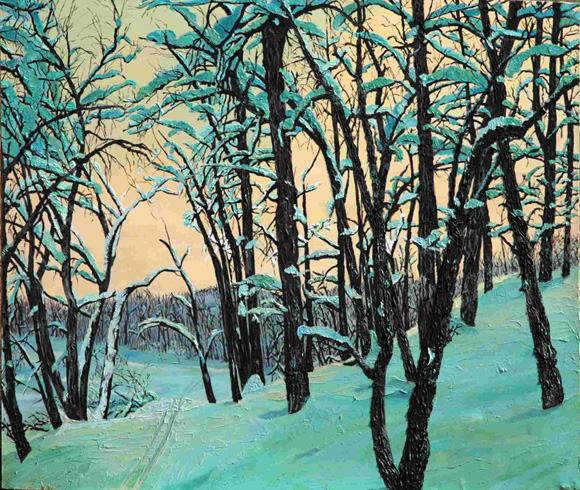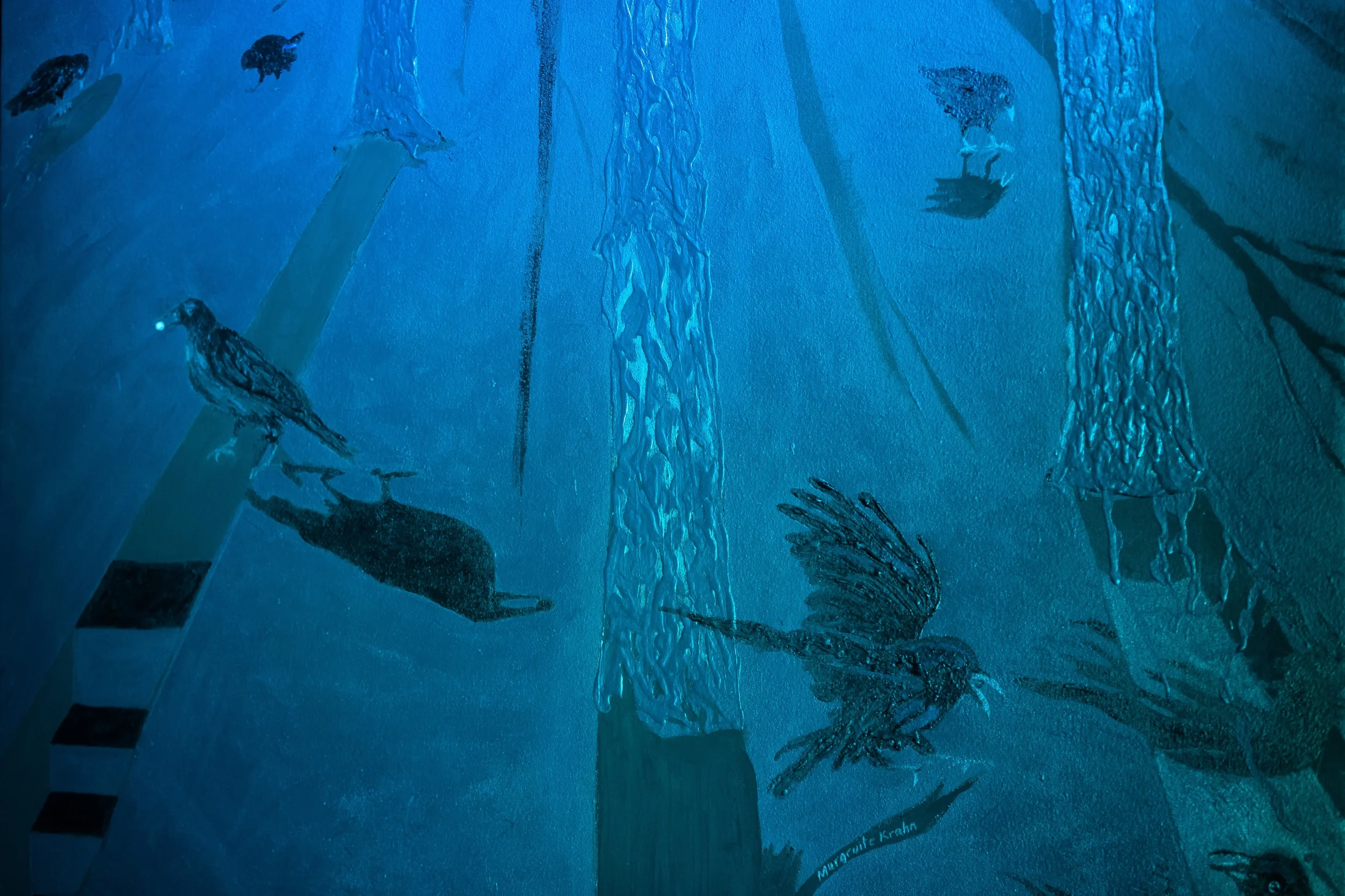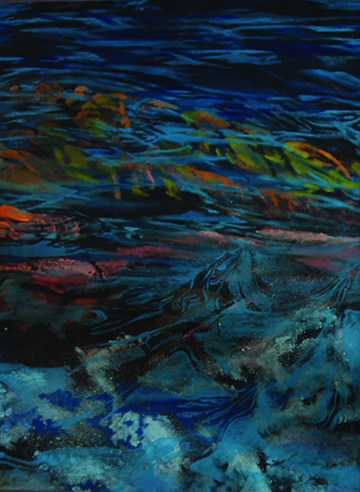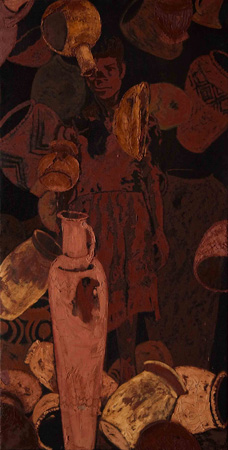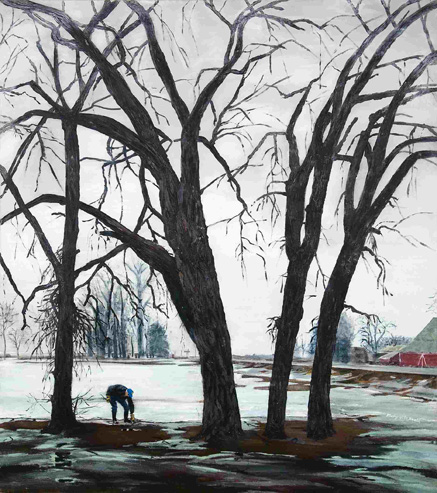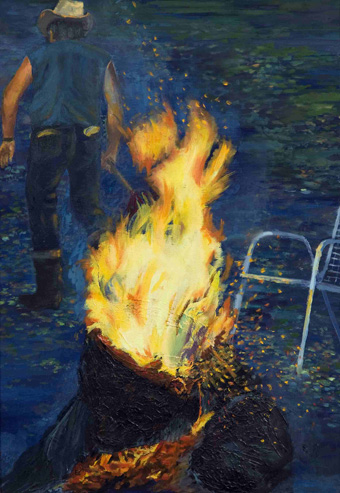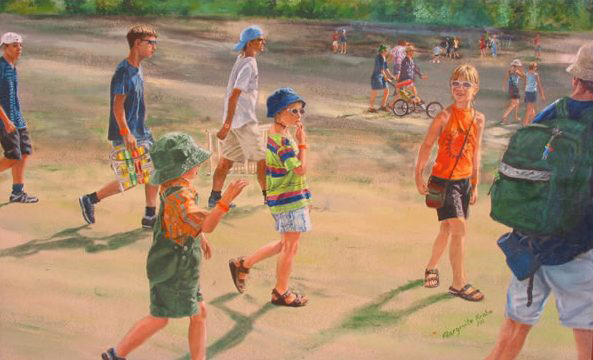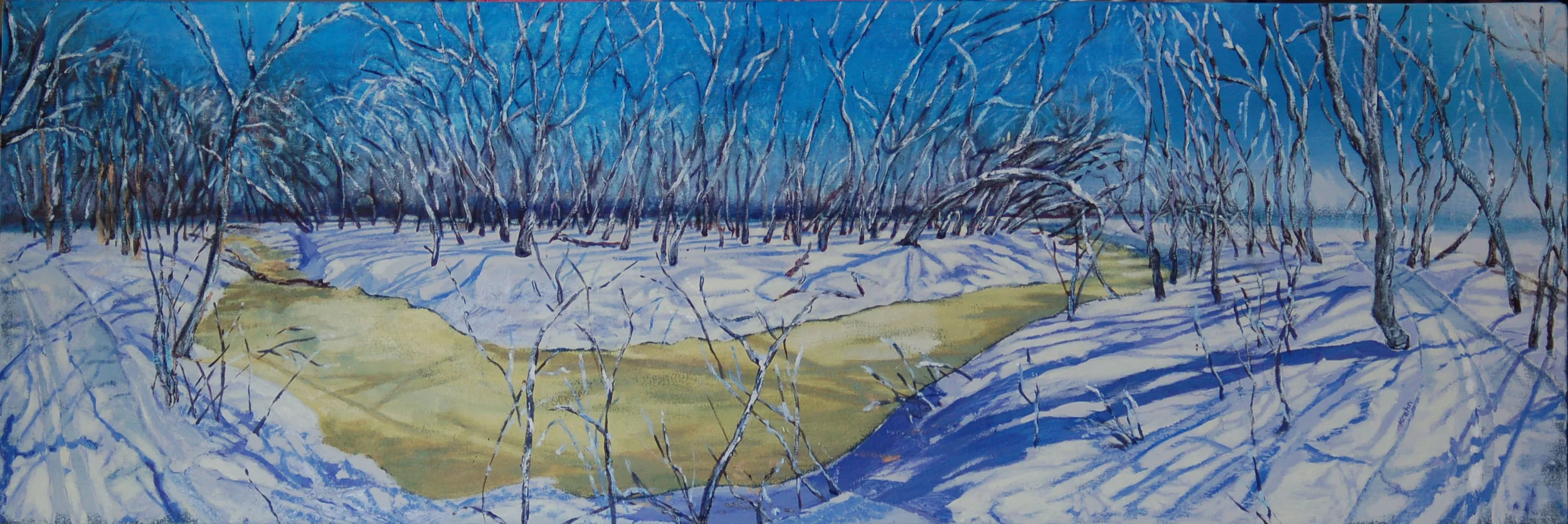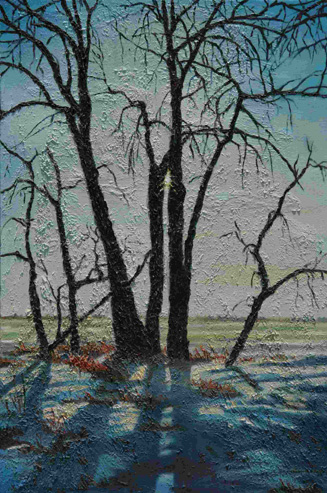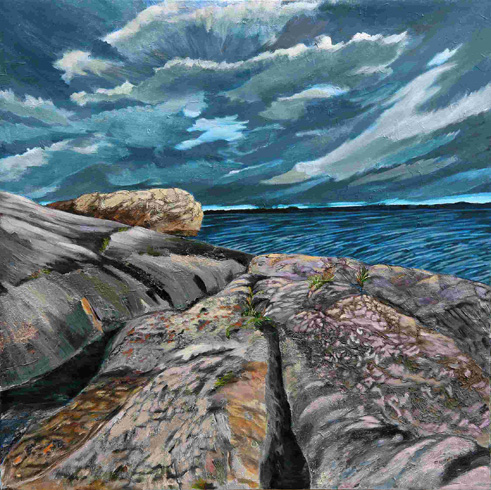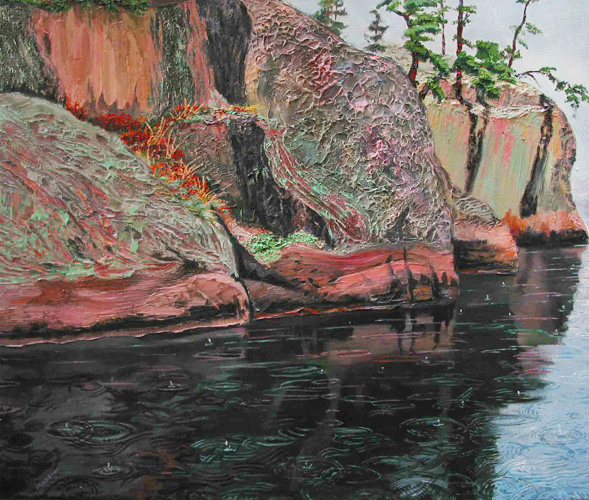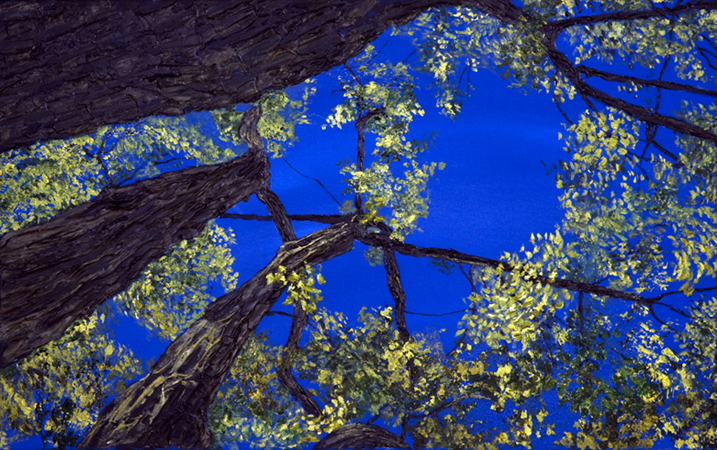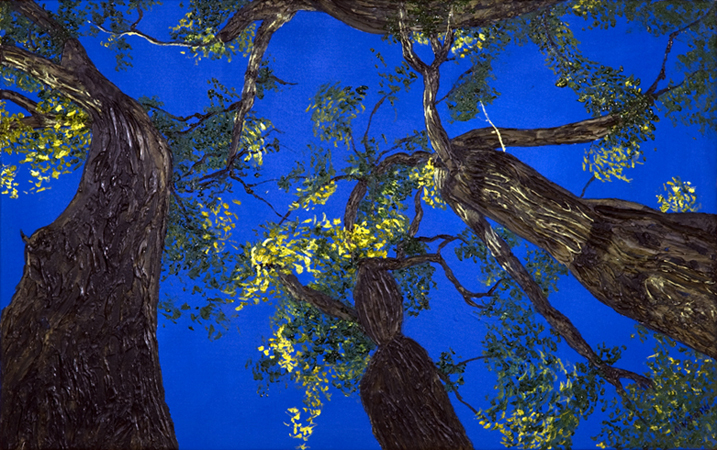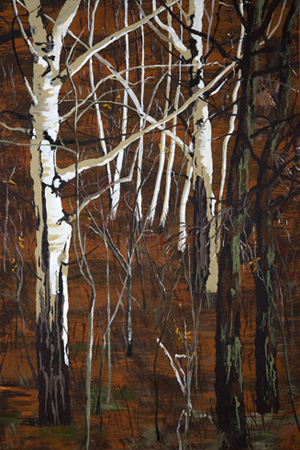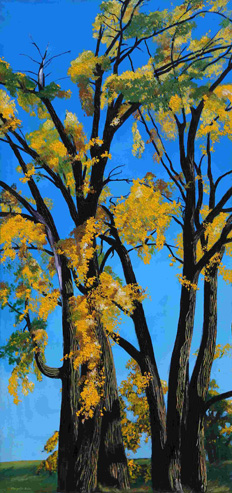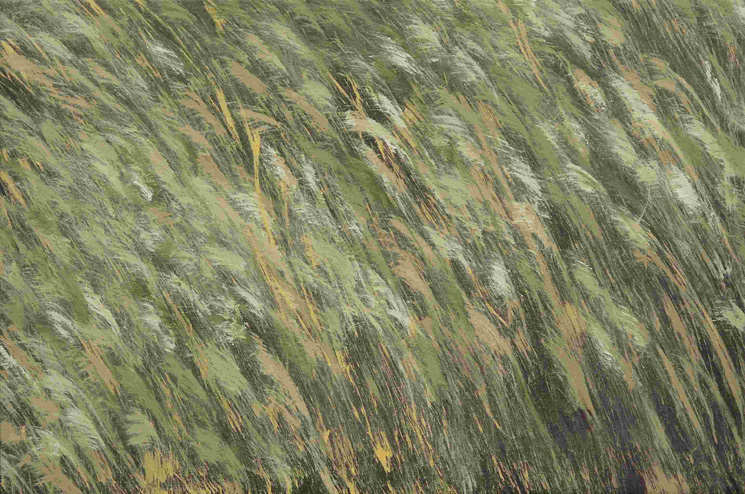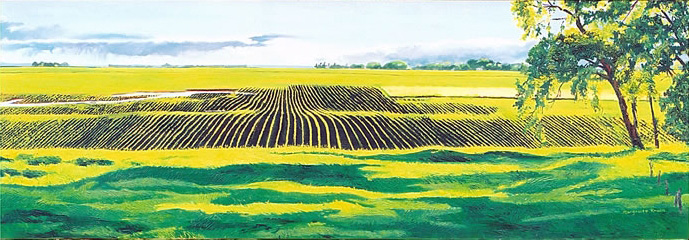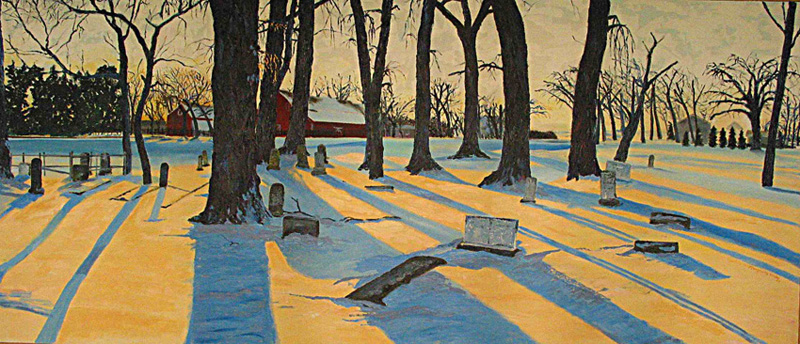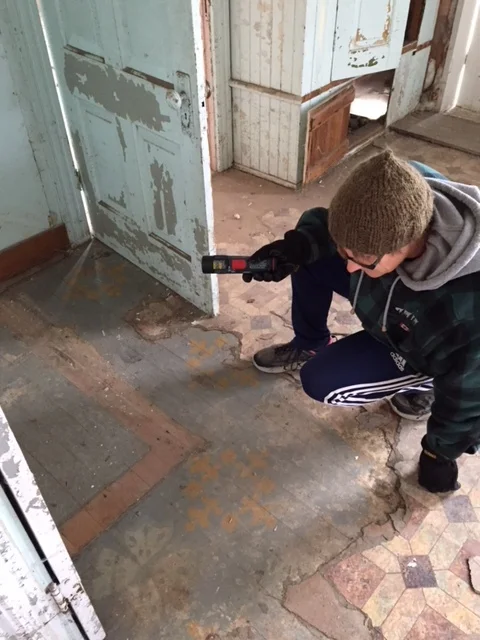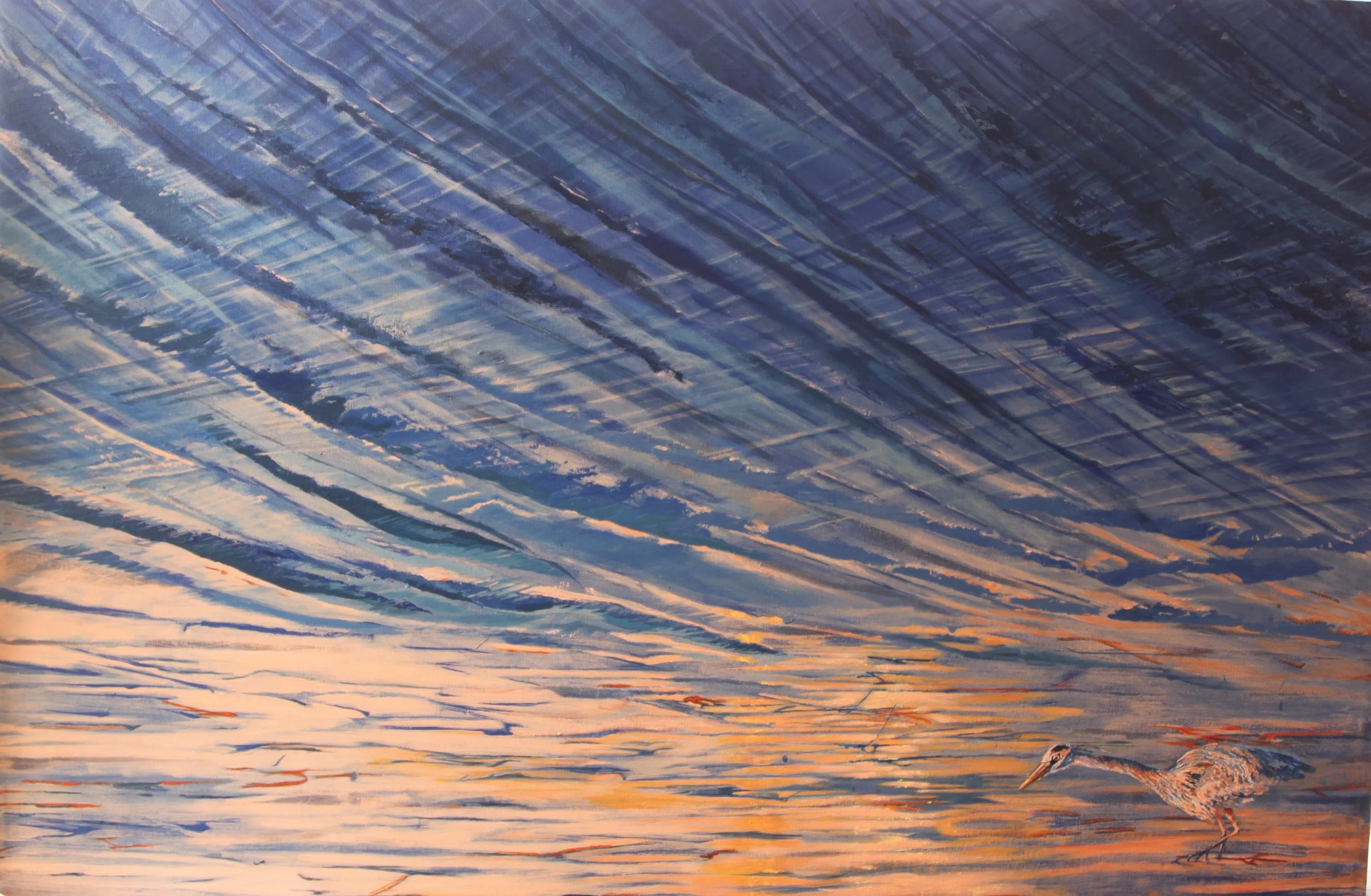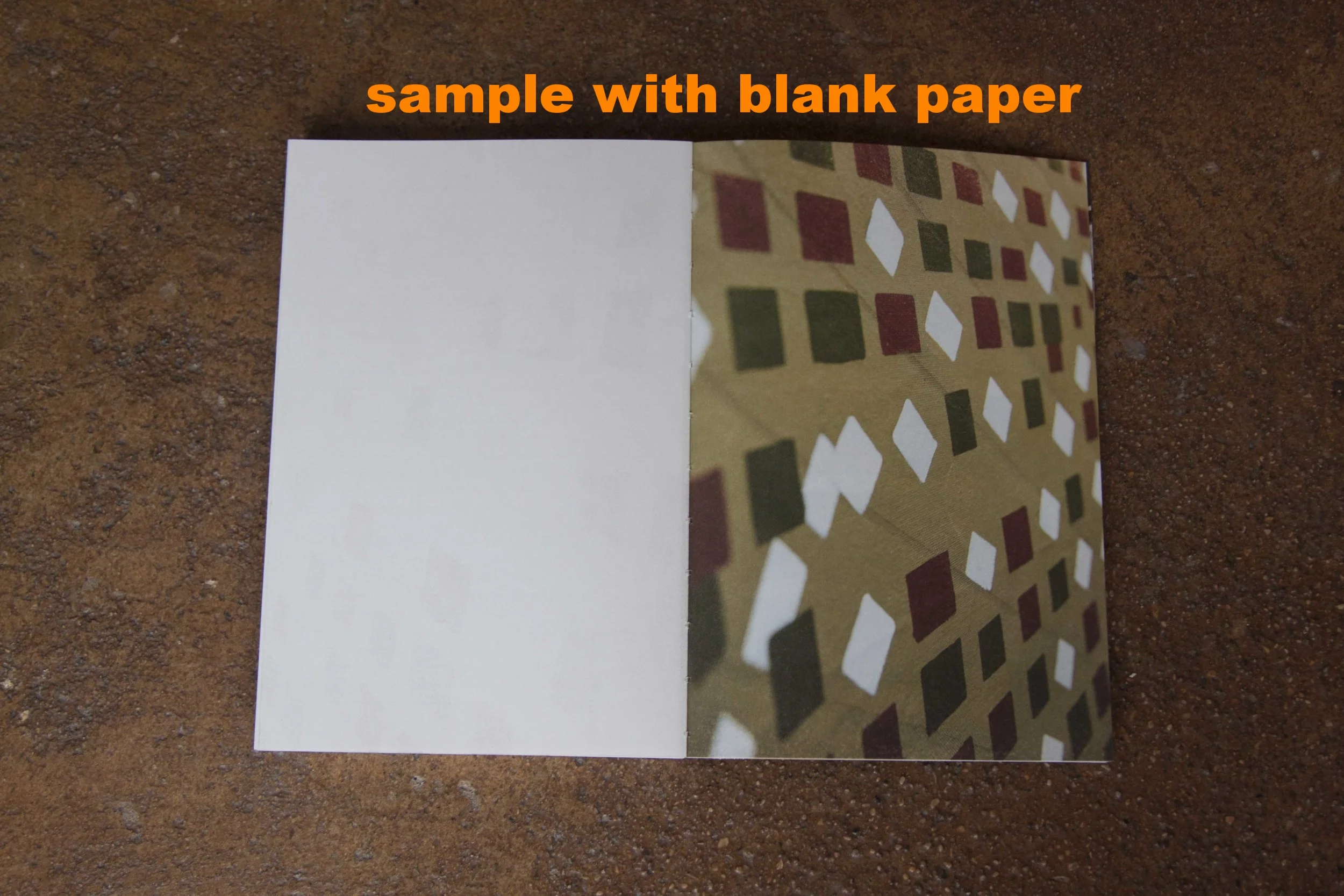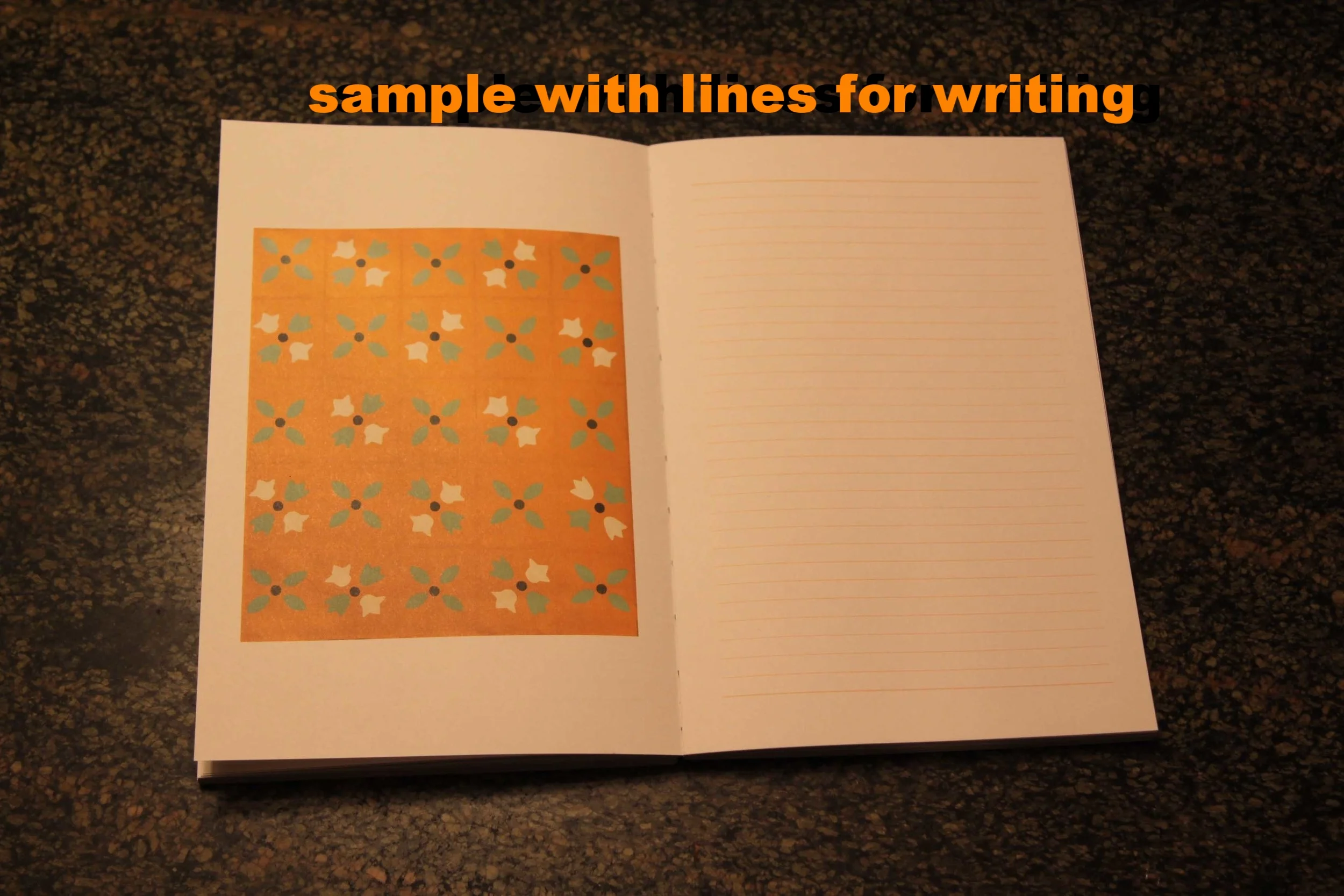RESURFACING:MENNONITE FLOOR PATTERNS…
Since 2001 I have been actively involved in the restoration, presentation and documentation of Neubergthal, an 1876 Mennonite Street Village and National Historic Site. At times I have felt like an archeologist unearthing “stories” within the walls and floors of the housebarns.
One such story, is the floor patterns created and painted by the women in the home. Preserved under layers of carpet and linoleum are anywhere from one to three layers of hand painted patterns on the floor boards. The journey to seek out and document these patterns took me beyond Neubergthal to other villages and housebarns in southern Manitoba. Although this was a functional art form that some will remember as late as the 1960’s, the layers of flooring, pattern, design, and colour take us deeper than the surface.
I suspect that the practice of hand painting the floors was brought from Prussia in the early nineteenth century to South Russia (Ukraine) and, from there, to Manitoba with the Mennonite migration of the 1870’s. The fifteen or so housebarns I have scoured through were built between c.1880 and c.926. A typical Mennonite house consists of a Russian bake oven in the centre with four rooms surrounding it: The Groot Stow (great room), Kjleen stow (small room or bedroom), Kjaakj (kitchen), and Faare Tuss (front room). At one time, all the floors were painted with a yellow ochre base and a floral motif of up to six colours. Typically, the kjleine Stow (small room, or bedroom) did not have a pattern. Around 1920, linoleum was introduced and with it the influence of geometric patterns. Somewhere around this time, high traffic areas, such as the kitchen, were changed to a grey or grey-green base with a floral or geometric motif. The petals of the floral motifs were painted with a brush while the centre was often stamped with a potato or other circular object. As patterns became more geometric, narrow tires, rope, vegetables, pails and other items were used to create the design. Stencils cut out of meat wrappers and cereal boxes were often in later years.. Thus far I have documented over 30 patterns from the foloowing villages- Neubergthal, Neuhorst, Sommerfeld, Grunthal ( West Reserve), Chortitz ( West Reserve), Village of Altona, Eigengrund, and Mexico.
Please stay posted for further information regarding sawdust floor patterns in earthen floors and recently discovered patterns.
Custom order floor cloths $30.00-$40.00 sq ft.




